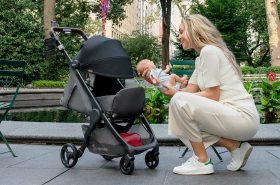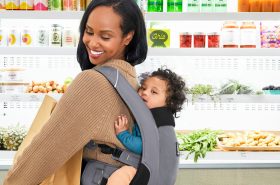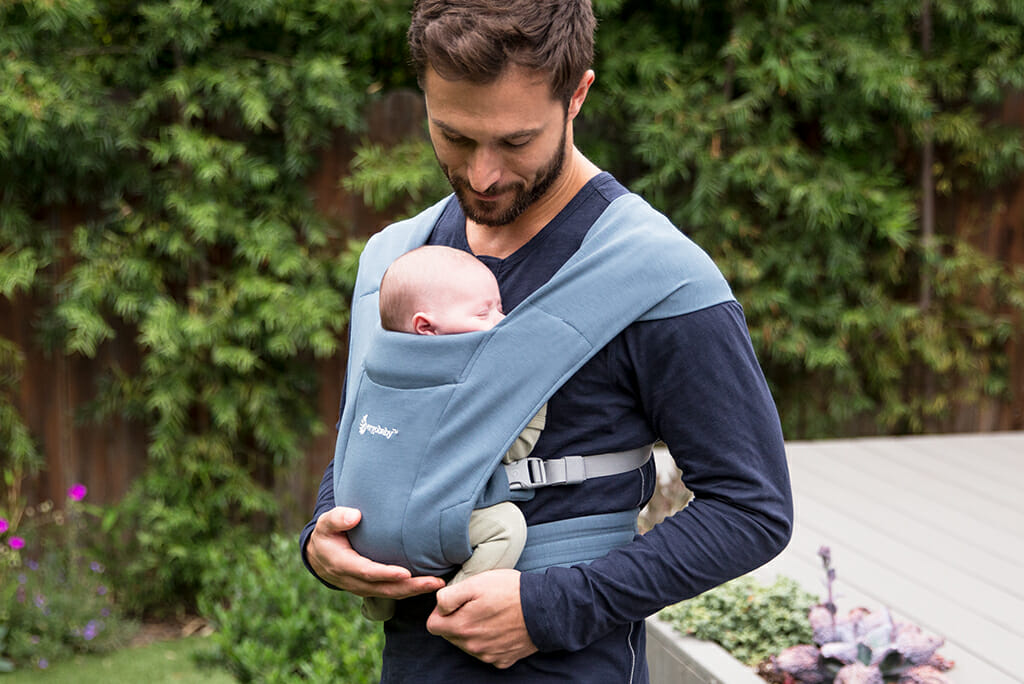
Strolling around town, we can observe fathers and mothers alike carrying their babies and toddlers close to their body and doing so with joy and without putting too much effort into it – in most cases, either with baby slings or baby carriers. Nowadays, there are even carriers specifically designed for newborns, such as our latest addition, the Embrace. The combination of a soft and supple sling fabric with the practical features of a baby carrier allows babies to explore the world in an ergonomic, safe and completely sheltered environment. Considering the progress made and the multitude of possibilities in the field of carriers, one might ask themselves how our parents managed to “survive” in a world without baby carriers! Even more so if they lived in big cities, on the third floor of an old apartment building or if they were intent on actively moving around town with their kid…
Carriers were, therefore, considered to be somewhat rare twenty years ago and were mostly considered to be part of an alternative lifestyle (even though, and we might as well tell you that much right now, we’ve never done anything else in terms of evolution). But why is it then that we carry our kids and above everything else: why does it work so well with our kids? Our babywearing expert Katrin, who loves carrying herself, addresses this question today.
The answer is actually quite simple and predetermined by nature. Nearly all animal children of this planet are carried by their parents. It’s probably because the basic need for body contact, warmth, limitation and movement come naturally to everyone. In reality, it’s just like the lock-and-key principle: once a baby is lifted, it almost automatically pulls up its legs. The baby ideally adjusts its position to the hip of its parents. This so-called ergonomic frog-leg position facilitates healthy carrying and keeps the baby’s back in a natural position as long as it’s supported within the respective carrier. The spinal column requires about three years from early development to straightening (1).
Nature has bestowed upon our children a set of anatomical conditions to develop an ideal shape to be carried. That is why, at the time of their birth, newborns have hip joints that are oriented to the front and a clearly missing curvature of the spine towards the front (2) in the neck and lumbar region. The latter develops by the end of its first year of life. On top of that, babies tend to have facing soles and bow-legged knees for the purpose of ideal adaption to your body.
The child’s head and neck area should be sufficiently protected by using a headrest/hood (in the carrier) and/or a rolled-up blanket/a small bolster (in the baby sling). This is important, considering that your baby can only turn its head up to 45 degrees and that the upper neck joint remains quite vulnerable and not yet fully developed (3). These physical attributes are complemented by a combination of important reflexes and the initially limited area of vision of about 20-25 cm with a visual acuity that is approximately 4 per cent as strong than that of an adult. They also make it very clear that humans are naturally designed to be carried and that you can do so without any concerns.
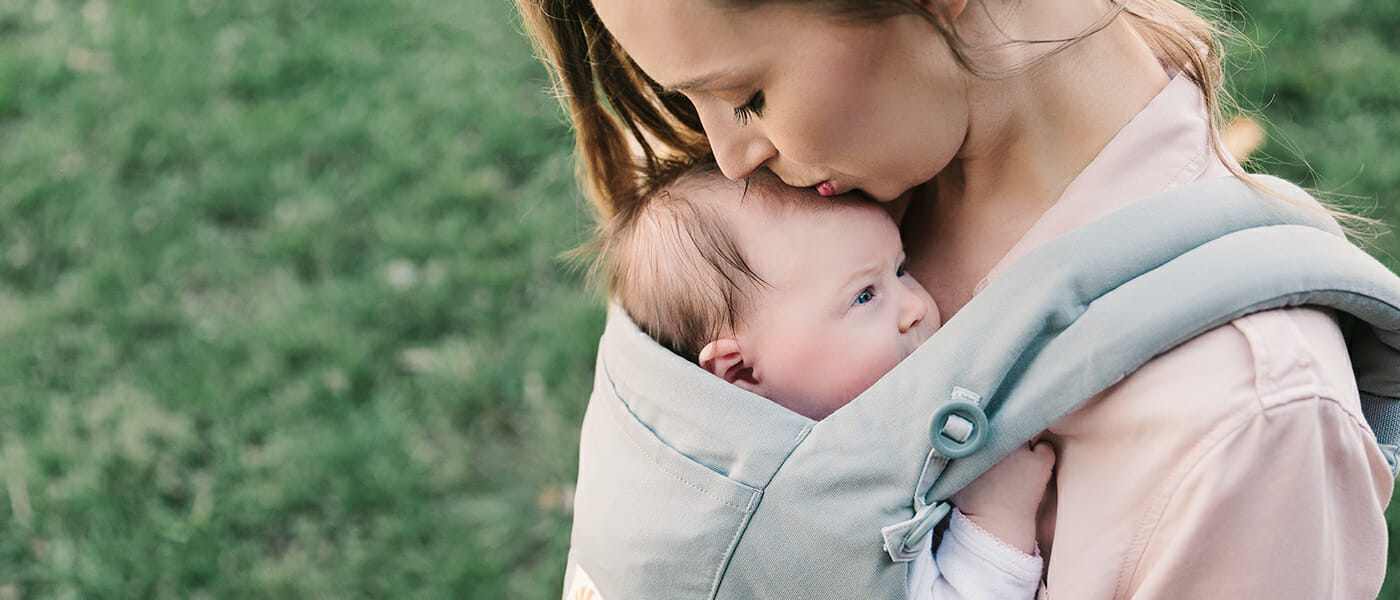
Below are our top ten tips on how to carry your child, based on Paediatric Physical Therapist, Birgit Kienzle-Müller :
- Ensure a good execution of the spread-squat position.
- Your child’s buttocks should be placed in a lower chair position.
- While asleep, the head and neck area should always be supported while maintaining enough, independent head control.
- Your baby should be able to use its hands to reach up to its mouth: this can improve breathing, awareness and the straightening of the spine.
- Naked feet during warm temperatures stimulate and activate the circulatory system.
- Offer “stirrups”: make contact with your child by touching and supporting the (naked) feet.
- Crossed shoulder straps on the carrier (such as the Ergobaby Adapt/Omni 360) or the baby sling (at shoulder blade level) offer both you and your child activating impulses to erect the spine.
- Choose the correct carrying height: ideally, place the focus near your core.
- At around 5 months old, you can begin to carry your child facing outward. The spread-squat position should be maintained. Wear baby in this position for no longer than 15-20 minutes at a time and pay attention to any signs of fatigue.
- Switching up carry techniques is always recommended, regardless of your child’s age. Make sure to use different carrying techniques/aids which switch up the side and the position from the front to the back. That way, different stimuli and movement impulses are conveyed to your child.
In consideration of the physical conditions and knowing, that all human children are essentially premature births, even the ones born on-schedule, we should do everything in our power to offer our children safety and a sense of security and protect and support them at every turn.
What easier way is there than with an ergonomic carrying aid?
It doesn’t matter whether we’re talking about a baby sling (such as the Ergobaby Aura), a special carrier for newborns (such as our brand-new Ergobaby Embrace) or an ordinary comfort carrier (such as the Ergobaby Adapt or Omni 360). The only thing that matters is that it offers an ideal fit for your child and that it furthermore offers the support required for the physiological conditions of your child.
If you are still not sure which carrying aid to choose for your family, you should consider making use of the expertise of a carrying consultant or a midwife specialized on the subject to guarantee your child’s healthy development.
With this in mind…. “carrying is the development of movement”. (5) Have fun with it!!
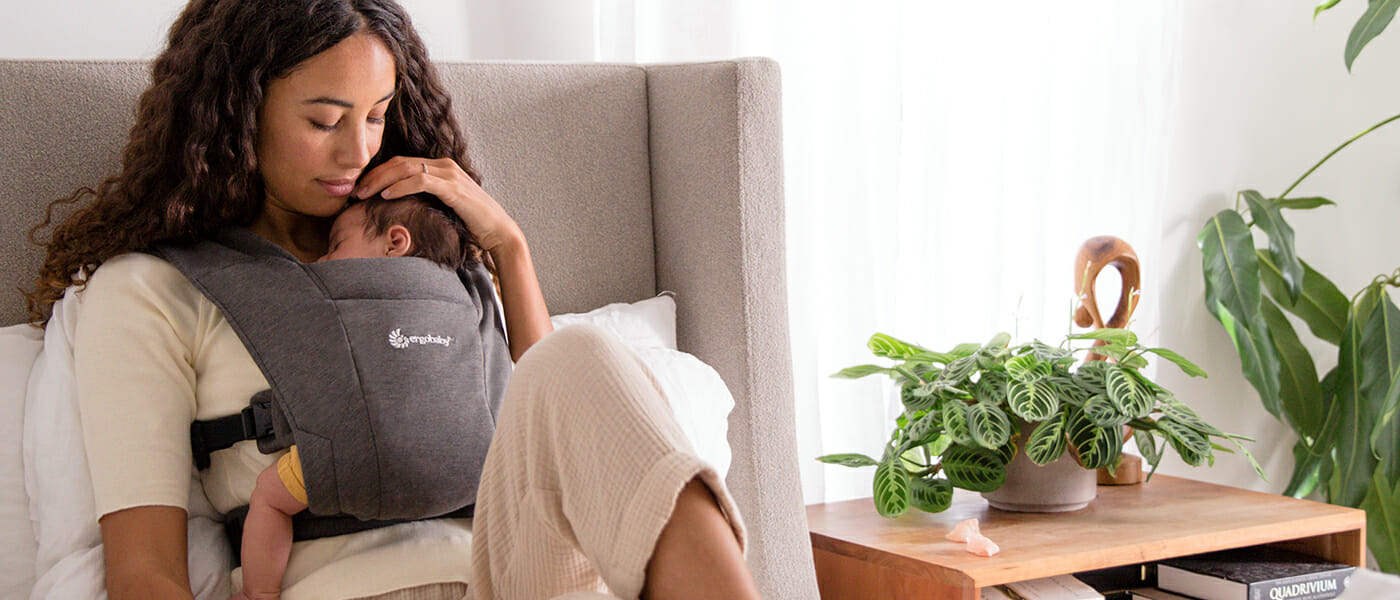
(1-5: professional statements made by Birgit Kienzle-Müller, Paediatric Physical Therapist)


